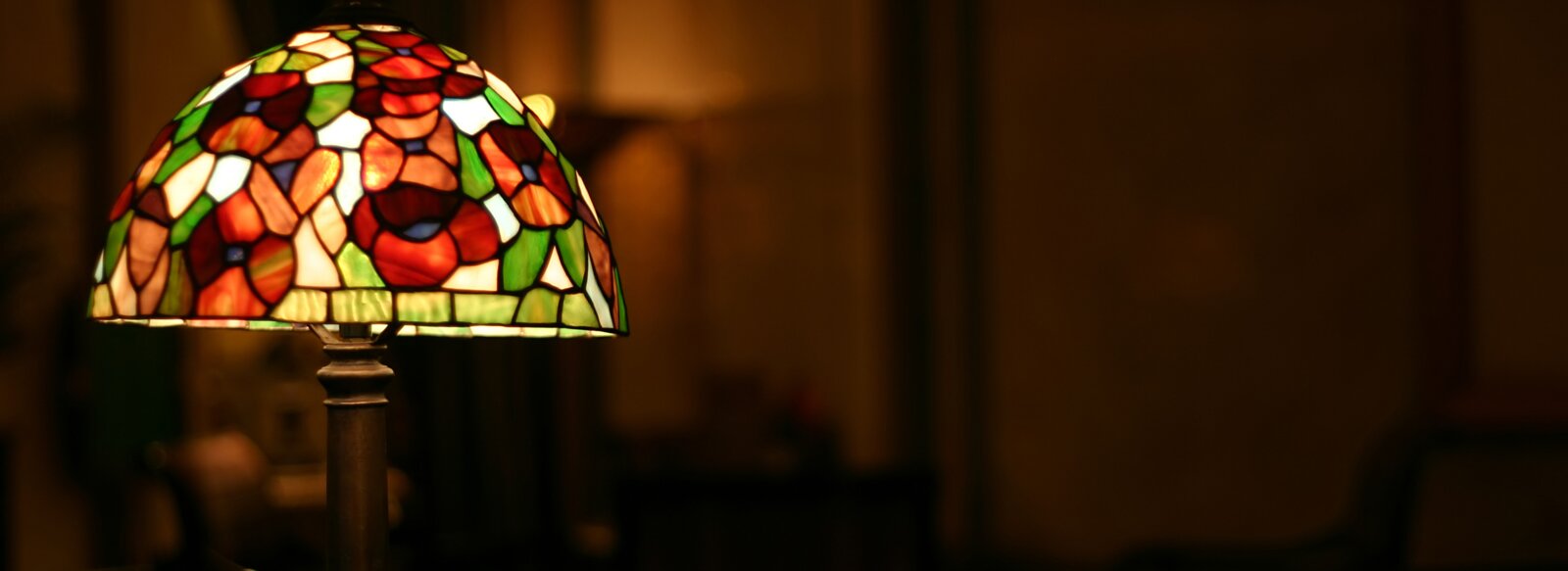
Lamp shades are like fashion. Some styles stay, some go and some return. We take a journey through the years, from the streets of Paris in the 17th century to the modern-day return to exposed lamps. Which moments have defined the lamp shade? And which designs have survived the test of time?
Ever had to light your home with candles after a power cut? They are no comparison to modern lamps, right? With their localized glow and minimal glare – no shades are needed. Go back in time however and such lighting was the norm. Accompanied by oil lamps, it was more important to create ways to transport light sources or protect people from an open flame. Glass containers for oil lamps and candle holders with handles were common.
In the 17th century, as oil lamps were first introduced to the streets of Paris and Italian cities, shades began to appear. Used to direct light onto the dark pavements below, reflectors were placed above and alongside the flame. Gas lamps followed – inside the home and out - and were much brighter. It was then that shades were first required to dim light. Opal (milky) glass and fabrics were most popular.
1879 changed the world. It was the year that Joseph Swan and Thomas Edison invented the incandescent filament electric lamp. The result? Lamps with a much more intense glare that could illuminate a bigger area. Shades were needed to disperse the light across a room. Combine this invention with Victorian style influences of the time and the lamp shade becomes a decorative feature central to interior design. Think fabric, lace, tassels and beads!
Fashions have since come and gone. Some, like the garish green and orange variations from the 1970s are best left in the past. Even some designs from the 1990s today look completely out of place. Others, however, are timeless.
In 1895, American artist and designer Louis Comfort Tiffany started selling his Tiffany lamps, moving designs into a different league. These leaded glass shades embrace the Art Nouveau style. Characterized by geometric shapes and natural designs, each requires hours and hours of work. With one of the originals selling for a reported 2.8 million dollars in 1997, you might not want one in every room!
Speaking of money, this leads us to our next classic: the emerald green banker’s lamp. You know, the ones you see in old libraries and on posh office desks. These became popular in the 1800s when George Westinghouse, an American entrepreneur and engineer started producing them.
They feature a glass lamp shade, resting on a solid brass post and are turned on and off via a pull-chain switch. And the color? The shade’s traditional green is said to inspire creativity.
The most elaborate and extravagant fixture, however, has to be the chandelier. No other fitting is more associated with grandeur and wealth as much as these hanging designs, which cascade from the ceiling in luxurious opulence.
So where are we now? It seems we have gone full circle. More than a century after Edison invented the electric light bulb, we have gone back to admiring the minimalist wonder of the lamp. Plain, exposed filament lamps, hanging from the ceiling look minimalist, non-fussy and utilitarian, and exude vintage charm. Bars, restaurants and homes are all going back to basics. LEDVANCE’s Edition 1906 is one such example - combining modern technology with a classic aesthetic. Elsewhere, industrial style, metallic shades are also a current top trend.
Predicting what is next for the lamp shade is like predicting which clothing will be in fashion in fall 2018: it is too early to tell! Interior designers, however, will most certainly already have their eye on the next big thing.